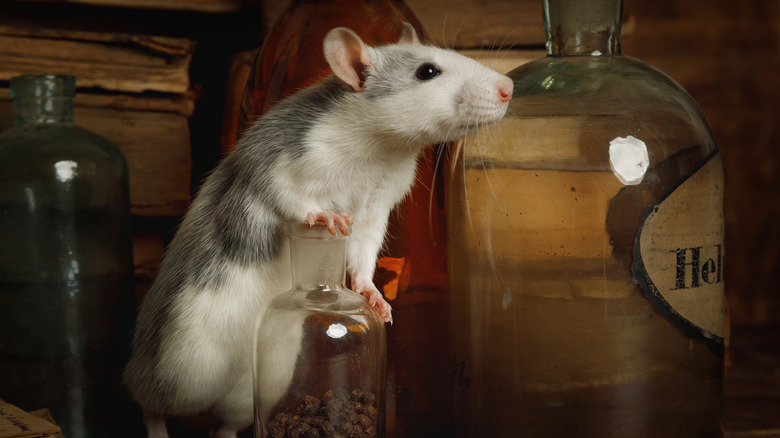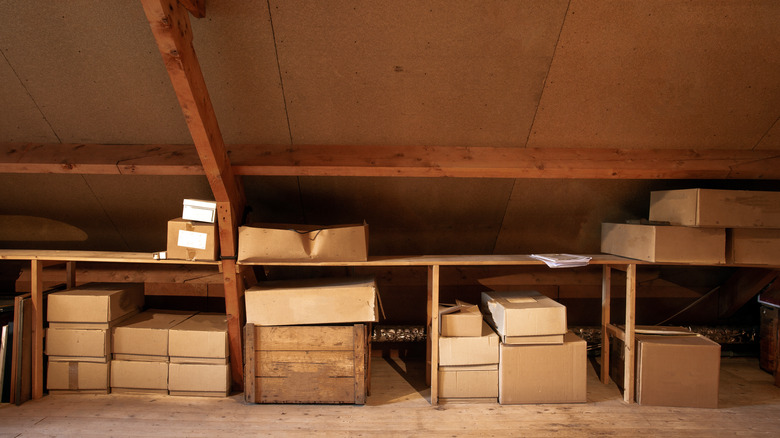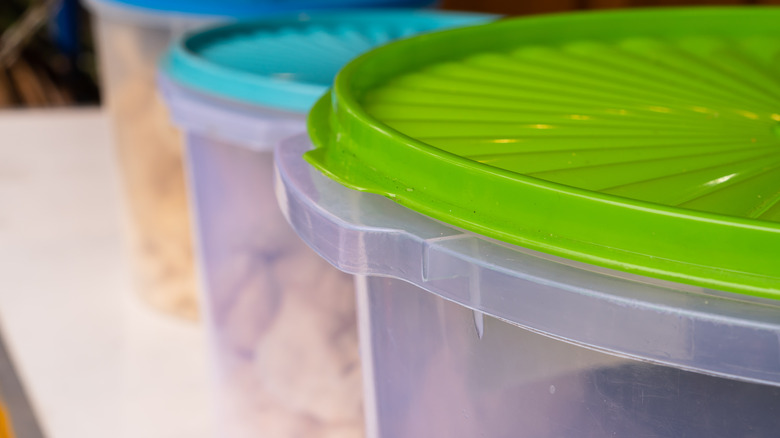Here's What's Attracting All Those Rats To Your Attic
Though no one ever wants to find evidence of rats in their home, it's an unfortunate truth that these rodents regularly make their way into houses. While you might spot evidence of a rat infestation at any time of year, they commonly occur as the colder weather rolls around in the fall and winter months. Rats are attracted to attics in particular because these areas often provide them with food, shelter, and water. While your attic can be an ideal space for you to store out-of-season clothing or old belongings, the cardboard boxes you may be keeping your things in are a particular lure for rats for a variety of reasons.
In addition to a safe and warm place to live, attics are also often dark and quiet, nestled away from the hustle and bustle of the house. They also often have plenty of space for rats to build their nests and contain materials that they like, such as cardboard boxes.
Why rats love cardboard boxes
Since rats are warm-blooded animals, they are always seeking out warm, cozy places to set up shop, especially as the weather outside grows colder. Attics are a perfect location as they are often warmer than the rest of the house. If there's a cardboard box around, even better, as it can provide an added layer of insulation from the cold. Boxes can also provide rats with a safe and enclosed space to hide away from humans, pets, or any other potential threat.
The rodents can also use boxes to build their nests. They shred and chew the cardboard into small pieces to create a soft and comfortable bedding material. Additionally, since rats have constantly growing incisors, they need to consistently gnaw on things to keep them from becoming overgrown. Cardboard is a soft and easy material for rats to chew while helping to keep their teeth healthy.
How to deter rats from making a home in your attic
As alarming as it is to discover a rat in your home, the real horror lies in how easily they can destroy your property. They are especially problematic in attics, where they can cause damage to insulation, wiring, and other structures. An important first step you should take if you have a rat problem is to seal up any cracks or gaps in your attic walls and roof. Rats can squeeze through very small holes, so it is important to use caulk, steel wool, or expanding foam sealant to close up any holes that you find.
Next, do not use cardboard boxes for storage. Instead, use plastic containers with covered lids. You'll also want to eliminate food and water sources. Make sure that all food is stored in airtight containers, and that pet food is kept in a container that is sealed. Fix any leaky pipes, and remove any pet water bowls. If you have a severe rat infestation, it is always wise to call a professional pest control company. They will be able to assess the situation and recommend the best course of treatment.


